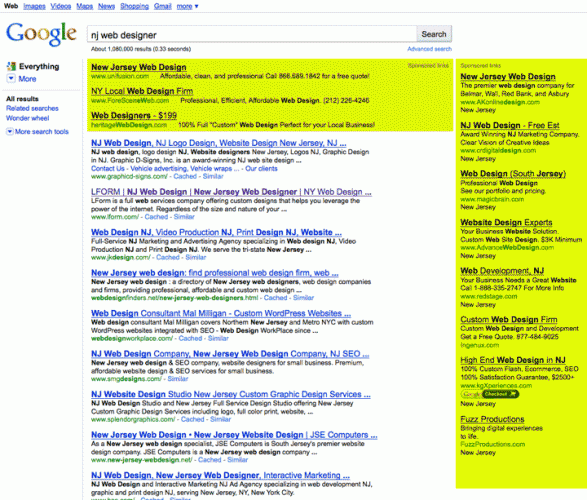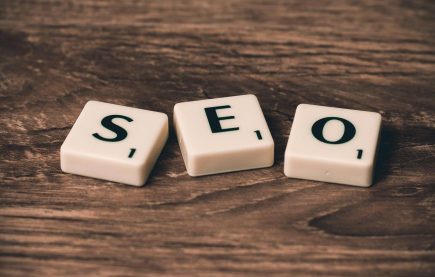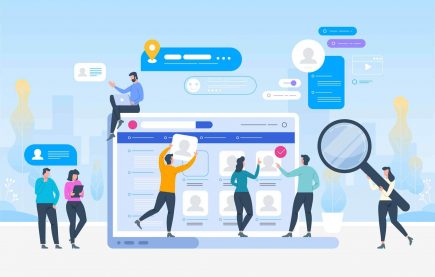How to Drive and Convert More Qualified Leads to Your Website
 So you might be wondering, “How do I drive and convert more qualified leads to my website?” Depending on the type of your product or service, paid internet advertising might be just the tool to increase your business. The goal of internet advertising is to attract traffic, convert traffic to leads, and turn leads into commissions. You can attract traffic to your website by creating “sponsored listings” and/or visually appealing “display ads” (which are static or motion graphic banner ads). In this discussion, we will focus on sponsored listings created through the Google content network, also known as Google AdWords. Google’s content network is a great tool to use because it reaches 80% of all global internet users. Sponsored searches are the text-only advertisements that are displayed on the top, right (and sometimes bottom) sides of a search engine. For instance, if you were to type a search word into Google, the top row and right column of the page are sponsored links. The rest of the listings are organic search results that you do not have to pay for. Rather these listings reflect a website’s page rank, which can be made higher through proper SEO (search engine optimization).
So you might be wondering, “How do I drive and convert more qualified leads to my website?” Depending on the type of your product or service, paid internet advertising might be just the tool to increase your business. The goal of internet advertising is to attract traffic, convert traffic to leads, and turn leads into commissions. You can attract traffic to your website by creating “sponsored listings” and/or visually appealing “display ads” (which are static or motion graphic banner ads). In this discussion, we will focus on sponsored listings created through the Google content network, also known as Google AdWords. Google’s content network is a great tool to use because it reaches 80% of all global internet users. Sponsored searches are the text-only advertisements that are displayed on the top, right (and sometimes bottom) sides of a search engine. For instance, if you were to type a search word into Google, the top row and right column of the page are sponsored links. The rest of the listings are organic search results that you do not have to pay for. Rather these listings reflect a website’s page rank, which can be made higher through proper SEO (search engine optimization).
Now that you know what sponsored listings are, you probably want to know how to go about purchasing this ad space. To begin, you will want to chose a “keyword” that best describes or is most relevant to your business. If you chose the most relevant keyword for you business, you already know that the user is interested in your product or service, and that is how you will convert traffic into leads. If you are unsure which keyword to chose, you can use Google’s Keyword Tool which will provide you with the amount of competitors using the same keyword, the number of times people searched for that keyword globally and locally, and the local search trends which tell you the fluctuation of the search over the past year. You will then create a text only ad that will appear when people type in the keyword you chose to focus on.
Next, you will want to purchase your ad space. Google makes it easy for you to stay in control of your spending by creating a specific daily campaign budget. It is important to note that Google uses a detailed bidding system for people and businesses to acquire ad space. Ad space is not set at a flat rate or cost. Once you have a set budget, you will then create an cost-per-click (CPC) bid or cost-per-thousand-impression (CPM) bid that you will want to pay every time someone clicks on your ad or the number of times your ad is displayed on the page. For instance, if you set a daily budget of $5.00 and a Maximum CPC bid of $0.20, that means you will have up to 25 clicks per day. Once you reach your campaign budget, the ad is automatically turned off, and will no longer appear in the sponsored links area. The AdWords Discounter automatically reduces your Maximum CPC/CPM (maximum amount you are willing to pay for ad placement) so that the Actual CPC/CPM you are charged is just one cent more than the minimum needed to maintain your position on the page. It is important to remember that you will only be charged for the amount of times someone actually clicks or views your ad. For example, if you set a daily budget of $5.00, and you set a CPC of $0.20, but your ad is only clicked on 5 times, you will only pay $1.00. The best part about Google’s contextual targeting technology is that your ad is sure to be placed on websites or blogs that are relevant to your business. This can be done through automatic targeting (letting the Google CN have your keywords reflect your ad placements) or manual placement targeting (choosing specific sites or sections of sites that you want your ad to appear on). They also offer a variety of tools to help monitor your bidding, budgets, and placements to see if they are being optimized in comparison to your competition (ie. getting the most clicks/impressions out of your budget, knowing the exact bid you have to place in order to show up on the first search page, getting the lowest possible price in order for you to maintain your ad’s position, being able to clearly identify which ads and placements bring you customers, etc.) After some monitoring and tweaking, these tools will help you best convert your leads into commissions. If done properly, Google AdWords (and paid internet advertising in general) is a highly effective way to reach a large majority of your target audience. It is my suggestion to read up on Google AdWords and watch a variety of tutorials so that you become familiar with this advertising tool (as it can be confusing for first time users). Some resources you may want to consider are:
Google AdWords Estimated CPC
You may also want to take advantage of their online tutorials:



